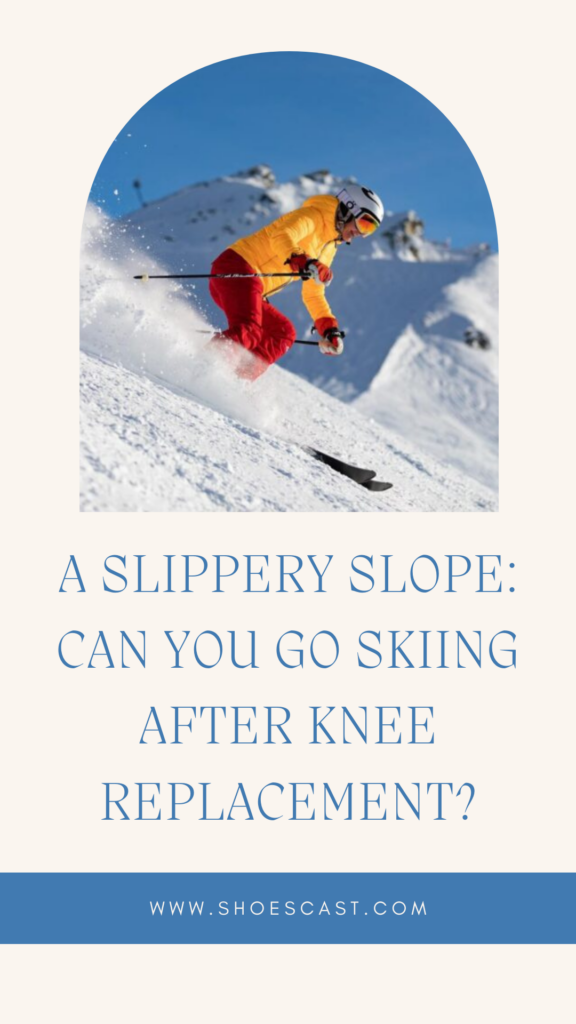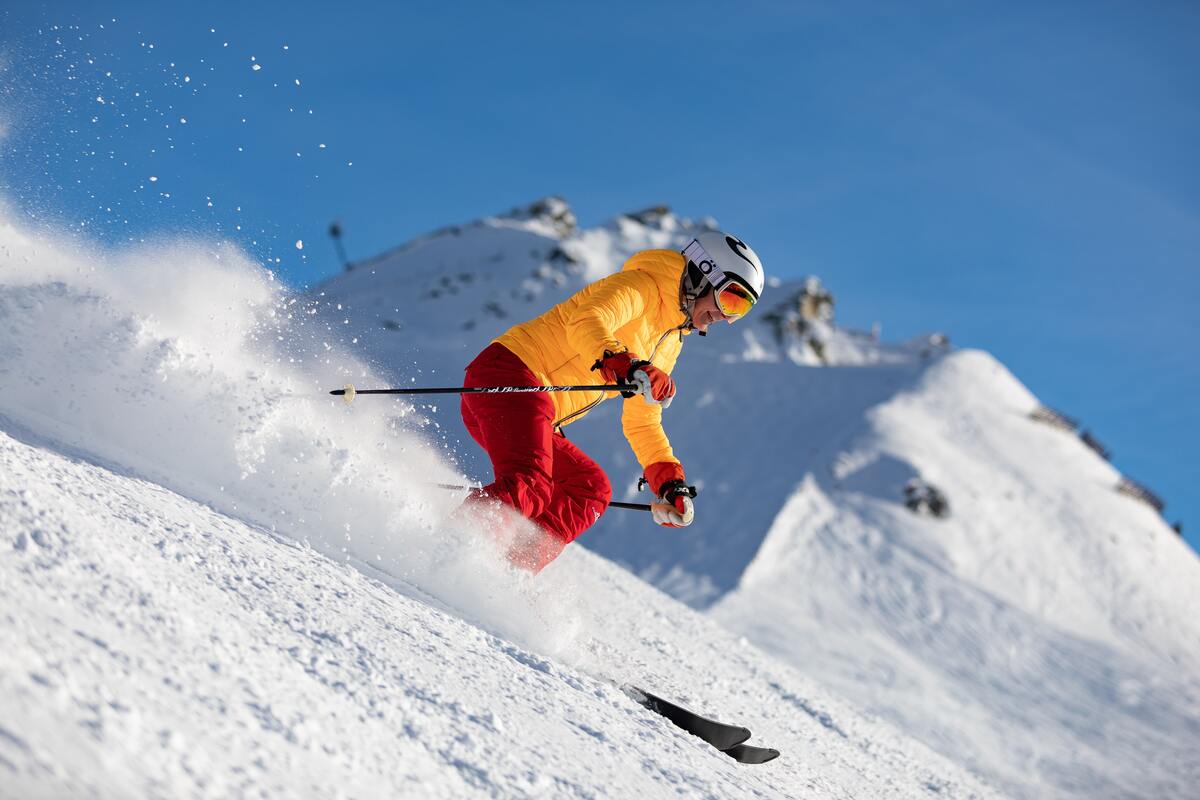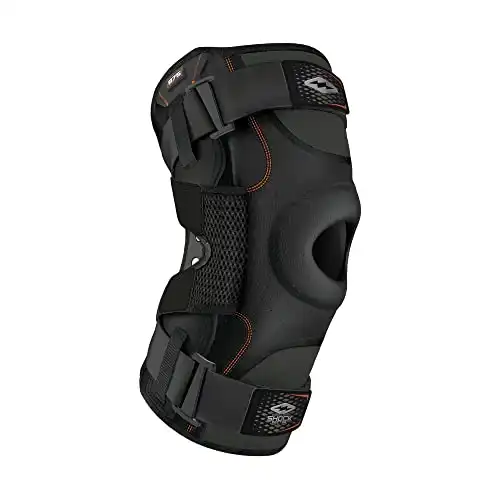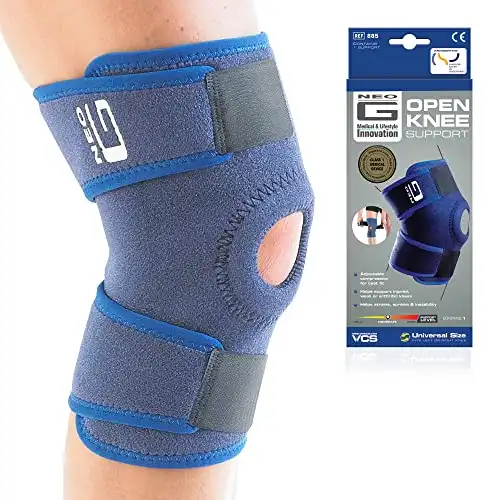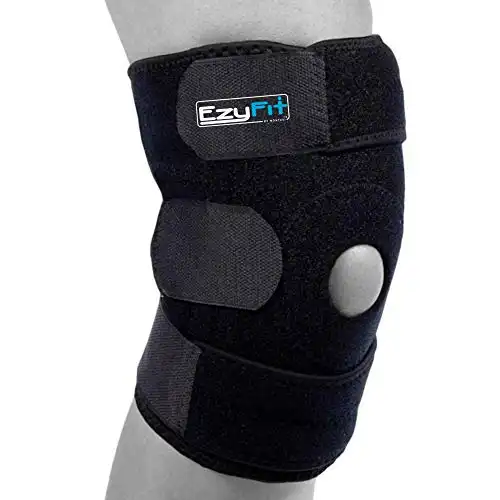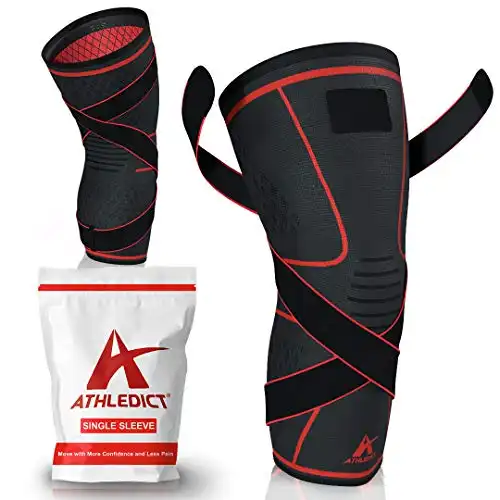When you agree to undergo knee replacement surgery, you’re prepared for your everyday life to turn upside-down, for better or for worse. Knee replacements are a great way to get rid of the pain and pressure you experience on the regular, but can you go skiing after knee replacement?
First things first, people who’ve suffered a great deal of discomfort, lived with little to no mobility, and passed on opportunity after opportunity due to knee pain find that they can move and function after getting the life-changing surgery.
Further, they’re able to try things and experience highs they never thought possible before – all thanks to knee replacement.
We’d go as far as to argue that skiing after a knee replacement is absolutely possible, depending on the patient. When skiing is a huge part of the patient’s life, there are a few things to keep an eye on to ensure the person is able to get back on the slopes. If you’re the patient in question, keep on reading!
What is knee replacement?
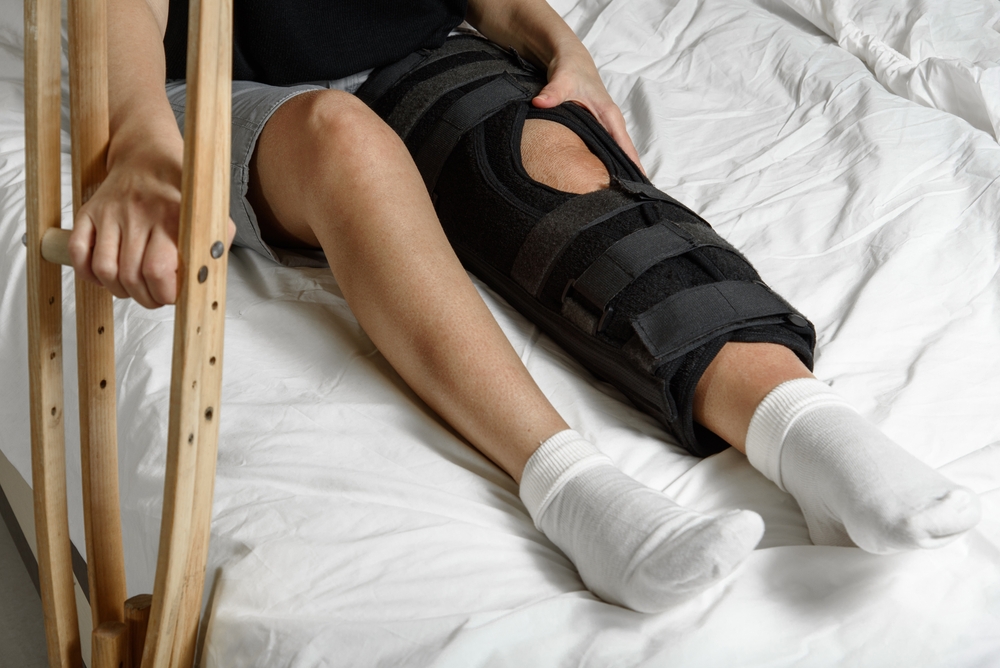
Where do we even start? In order to understand the complexity of knee replacement surgery, understanding what knees are made up of can make a world of difference. Knees are comprised of three compartments – medial (the inside), lateral (the outside), and patellofemoral (the front).
Within these three compartments are three (main) bones – the femur (thigh bone), patella (kneecap), and tibia (shin bone). Why are we telling you these things?
With time, the pressure you put on your knees when walking, running, working out, or playing sports can cause the cartilage to wear. When this happens, your bones start to rub against each other, causing a tremendous amount of stiffness, pressure, and pain.
Because of that, you might find yourself unable to do the things you enjoyed doing your entire life – like skiing. Knee replacement surgery is a great way to combat that.
But, what is knee replacement surgery? Worry not, the doctors don’t replace your entire knee during the procedure. More times than not, only one component of the knee needs replacing.
When all three components are affected, the doctor removes the damaged cartilage and replaces them with implants to restore your knee’s anatomy. Now, the recovery depends on whether you’re getting a total replacement or a partial replacement, but here’s what you can expect.
What does proper recovery after knee replacement entail?
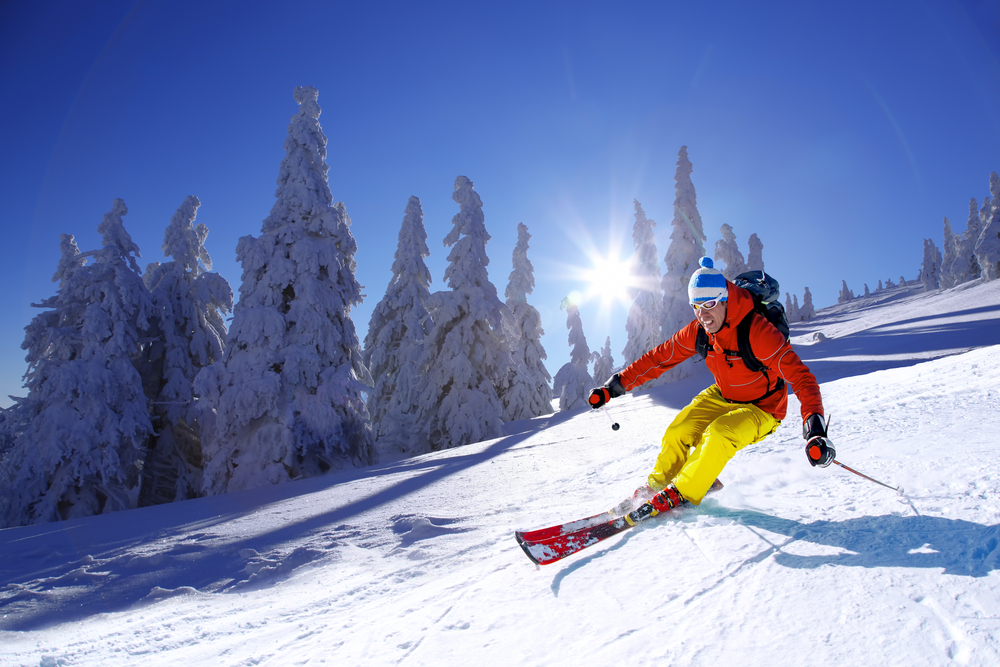
When you initially decide on getting knee replacement surgery, chances are you expect to return to your regular shenanigans within the first few weeks of recovery. While the surgical repair of your knee will allow you to be more active for years to come, that doesn’t mean you hit the slopes right away.
Needless to say, post-surgery recovery plays a huge part. When the surgery’s done, there are three crucial milestones you need to hit before you can even think of getting back on track.
Number one, the first two weeks are acute post-operative recovery. During these first two weeks, you need to focus on reducing the swelling, allowing the incision to heal, and gently exercising your knee.
Milestone two is the following four weeks reserved for physical therapy. During these four weeks, you’re expected to wean off gait aides with the help of physical therapy.
The third milestone: the following six weeks dedicated to activity rehabilitation. Between weeks six and twelve, you’re supposed to build strength, work on your flexibility, and prepare to return to skiing.
We do need to underline that everyone’s recovery is different, which means you might hit certain milestones sooner or later. But as long as you’re consulting with your doctor at all times, there’s no reason you won’t be able to return to skiing after you recover.
So, can you go skiing after knee replacement?
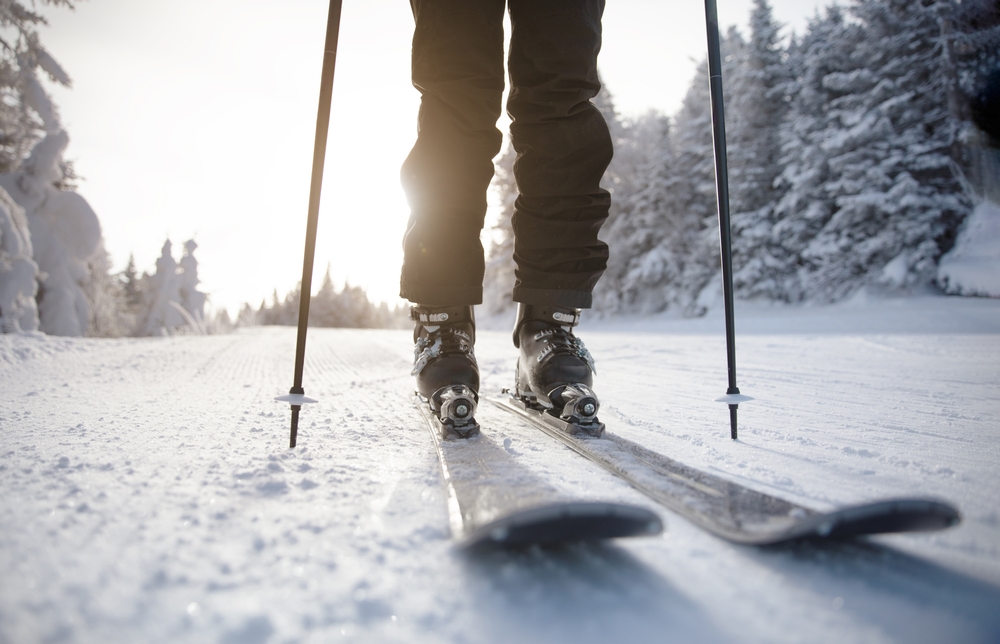
Not right away, that’s for sure.
After knee replacement surgery, focus on hitting the milestones we mentioned beforehand. At the end of the day, you need to ensure your knee is healthy before you attempt to get back on the slopes. And, you need to get a green light from your doctor before you undergo any strenuous activity.
Whether you’re planning on going back to skiing after knee replacement or not, you need to follow your doctor’s orders to ensure you don’t damage the progress you made with the surgery.
What do we mean by that? First and foremost, your doctor might advise you to avoid high-impact activities for the time being, depending on your condition.
Furthermore, you might need to keep a healthy weight and keep your knees strong and mobile to ensure you don’t end up putting too much pressure on them once more. Finally, you’ll likely need to keep track of what hurts.
When you’re trying to recover from knee replacement surgery, you might think you’re on top of the world because you’ve rectified the one thing that kept you from skiing. But that’s not the case – you still have a long way to go before you can go back to skiing the way you did before. Be patient.
What to consider before returning to the slopes
Now, most doctors don’t have anything against experienced skiers getting back on the slopes. Skiing after knee replacement surgery might seem like a long shot, but it’s much more common than you might think. Skiers are resilient and they’re more likely to get back on the slopes than not.
Yet, ski injuries are more common than you might think, and that’s why you need to stay alert during the first few weeks of getting back on track. Consider your experience level and act accordingly.
Seasoned skiers know what they’re doing, but you might want to take things slow if you’re just getting started. So, you might need to pick your days and your terrain to ensure you’re safe.
Take your time – that’s pretty much the best piece of advice we can give you. Getting a new knee doesn’t mean you can’t do the things you’ve always loved doing. With some time, planning, and patience, you can get back on the slopes in no time.
What are the best knee braces to wear for added support on the slopes?
1. Shock Doctor Maximum Support Compression Knee Brace
Well, knee braces are a great way to ensure your knee stays supported and protected during the process of getting back on track. We do recommend consulting with your doctor before deciding on a knee brace, but we’re positive you’re going to enjoy the ones we picked out for you.
Starting with the Shock Doctor Maximum Support Compression Knee Brace, you’re guaranteed to notice a difference. With quick access finger tabs, dual hinges for support, and breathable, latex-free fabrics, the Shock Doctor knee brace makes for the perfect armor for your knees.
2. Neo G Open Knee Support
Knee braces are meant to provide you with enough padding, protection, and support to ensure you don’t put too much pressure on your knees post-op. With the Neo G Open Knee Support knee brace, you can count on exactly that.
Check the claims that come with the Neo G Open Knee Support knee brace, and you’ll understand where we’re coming from. It is medically prescribed, helps heal injuries, and keeps your joints intact.
Not to mention that it’s super simple to slip on and off, and wear during regular physical activity like walking, hiking, and skiing. What’s not to love, right?
3. EzyFit Knee Brace
When skiing after knee replacement surgery, you might notice your knee feeling a little unstable and unsupported. More times than not, that’s because you need the added support that comes with a knee brace for the time being.
And, what do you know – EzyFit Knee Brace offers you that type of support. With dual stabilizers, strengthened double stitching, and durable velcro closures, you can cruise down the slippery slopes without fear.
We do need to mention that, for the best results with this brace, you should apply a topical treatment to any sore spots before you put the brace on. We suggest consulting with your doctor beforehand.
4. McDavid Maximum Support Knee Brace
What type of knee brace do you opt for when you need a little more flexibility alongside support and stability? We’re happy you asked – McDavid Maximum Support Knee Brace provides you with exactly that.
With a comfortable, snug fit, freedom of motion, bilateral geared polycentric hinges, and optimum compression, there’s nothing you can’t do when you’re wearing one of these bad boys. What are you waiting for?
5. Athledict Compression Sleeve
We’ve arrived at the end of the article with one of the best compression sleeves to wear when returning to skiing after knee replacement.
If you’re unsure that a knee brace is for you, you might want to go for a compression sleeve that’s much more comfortable, breathable, and ergonomic. Whatever you decide to do, the Athledict Compression Sleeves are worth checking out.
Stay safe!
